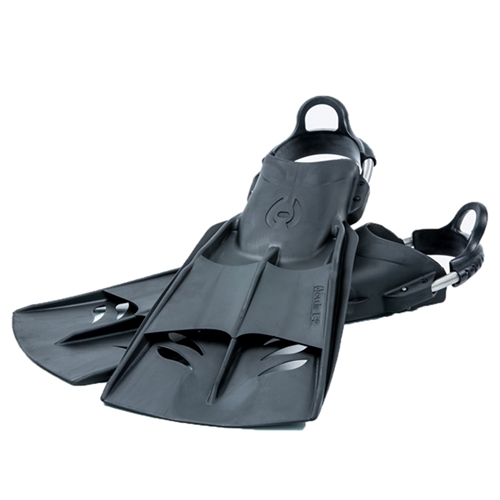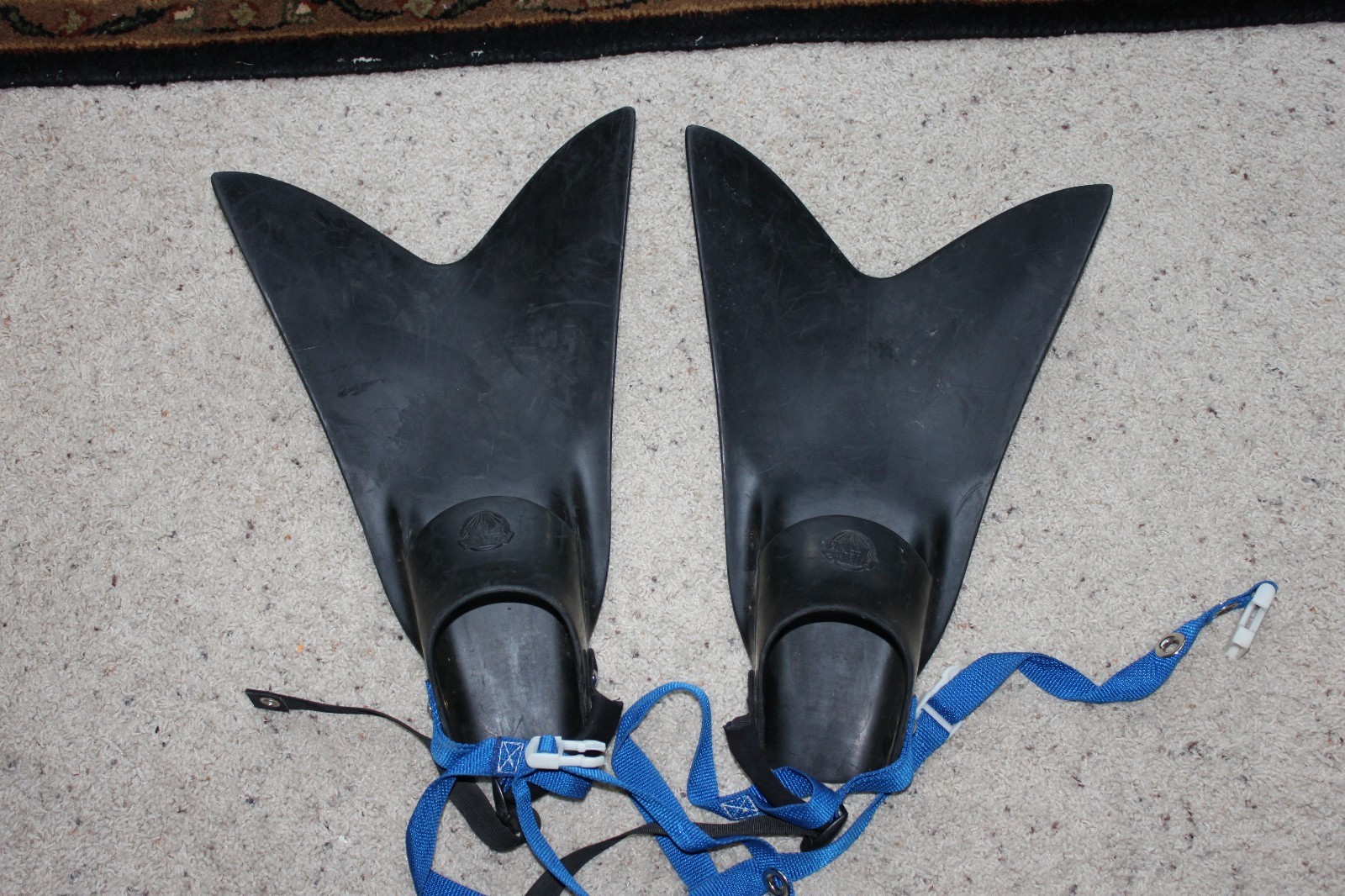Lightweight Travel Gear
If you believe that baggage fees belong on the “No Fly List” then it might be time to invest in some new dive gear or try a few new packing strategies.


Starting off with the newest piece of dive gear to deny boarding to baggage fees, we have the Aeris Jetpack. This revolutionary designed system is not a backpack, but is part Buoyancy Compensator (BC) and part semi-dry day bag (SDB). While traveling to the airport, you can hold around 30lbs or a weeks worth of gear and essentials in this combined (SDB-BC) or Jetpack . . .for short. Once you arrive at your destination, just unzip the two compartments and within minutes you can assemble the one-size fits all BC section while the other section now functions as your boat and beach dive bag for fins, mask, snorkel, towel, and other items that may be placed in two small side pockets. The 6.25lb BC has 30lbs of lift and can carry 14lbs of dumpable weight and 10lbs of non-dumpable weight. We guess they assumed that if a BC shoulder strap system could be used to carry a scuba tank to the beach, then why not dive gear to the plane? The best part of this system is that it fits in the overhead compartment of most commercial airplanes so you know where your dive gear is at all times, and with most major airlines, this means the Aeris Jetpack is baggage fee free and dive wallet friendly.
See the video here:


Another approach to overhead space is the Aqua Lung Travel system. Inside the Aqualung roller bag, you can place the 4.4lb Zuma BC, a micron regulator, a low volume micromask, snorkel, aqualung hot shot fins, and a mesh bag for right around 20lbs. The hot shot fins are shorter than most other fins, but if you are in to 15 to 50 dives a year, this light weight system may be just perfect for you. The strategy is simple, small lightweight dive gear items means easy storage in overhead bins, and long term savings on baggage fees.
See an Aqua Lung 20lb video on Youtube:


Another revolutionary approach that works just as well with big and heavy revolutionary dive gear bought before 1776 as it does with newer lighter dive gear is the DiveCaddy Gen2. This system uses your gear to form the padding, rigidity, and essentially the structure of your complete dive bag. You simply have to release 3 compression straps and you can quickly fold out the travel bag to insert gear, take out gear, or more importantly impress the staff at TSA. The Gen2 comes with a Spider bag for cold water gear storage, and a FinCaddy for quick storage or access to fins and a mesh bag for mask, snorkel, gloves, etc. The Gen2 also comes with a destination bag that you can use as a boat bag, or to cover/conceal your DiveCaddy Gen2 when on little planes that don’t have overhead space and instead load onboard luggage tagged bags right next to the plane in a special gateway deliverable compartment as apposed to the baggage claim destination compartments. On a side note, we think the DiveCaddy Gen2 was built to last 365 dives a year, or 365 years; we’ll have to get further clarification, but we definitely know that it’s built to last.
See the Quick Start or Airport video at:




As a reminder, fins that are wide, long, or the length of a thresher shark’s tail may just have to travel as checked in luggage. They could also put you over the 50lb limit set by many airlines for the maximum weight of a bag, so you may find it cost effective to purchase a smaller travel size fin. Tusa, Mares, Scubapro, and other manufacturers make travel fins that are on average less than 24inches, but offer impressive performance without leg strain.


You might also consider placing all your light dive gear in a 747model Travelpro roller bag or a Rick Steves Europe soft travel backpack to place your gear on board in the overhead bin. Photography savvy divers sometimes use large vests with lots of pockets to store lights and camera gear and remove the vest once onboard the plane. If it’s worn aboard, it’s not considered a carry on item by major airlines.
As for dive knives, there will always be a need for checked luggage no matter how lightweight they make these sharp edge devices. Some airlines though let you check your first bag for free. Some airlines let you check a bag in for free if you are part of their mileage plus program. It’s something else to consider when you book your flight. We don’t recommend putting anything you can’t live without in your checked luggage though as strange things occasionally happen to checked bags, and HNL and HKG look really similar on a baggage tag to a tired eye. Not everybody knows that (HKG) Hong Kong is where factories make certain wetsuit items, and (HNL) Honolulu is where tourists wear certain items. Dive gear in the overhead, under the seat or in a vest will give you peace of mind every time you fly.
With so many ways to carry dive gear, and so many lightweight dive gear products developed over the last few years in response to airline baggage fees, finding the right lightweight dive gear system for you should not only be fun to try on or pack for your next flight, but even more fun to use on your next dive.

Recent Posts
- Eastern Malaysia, Sabah, Sipadan & More
- Ghost Pipefish, Pipefish, Seahorses, and Sea Dragons
- Australia Queensland and the Great Barrier Reef
- Tioman Islands, Malaysia
- The Riviera Maya
- The Peter Diving System
- The Bay Islands, Roatan, Utila, Guanaja, and more.
- The Cuttlefish; The Undisputed Master of Camouflage.
- The Maldives: A Garland of Islands in the Indian Ocean
- Frogfish, The Overlooked Camouflage Artist
Categories
- Australia
- Bahamas
- Bay Islands
- Belize
- Blue Hole
- Bonaire Diving
- Borneo
- Cayman Brac
- Cayman Islands
- Cozumel
- Curacao
- Cuttlefish
- Dive Destinations
- Dive Equipment
- Dive Liveaboards
- Dive Resorts / Properties
- Dive Travel
- Dive Travel Deals
- Diver Wellness
- Dolphins
- Dominica
- Eagle Rays
- eagle rays
- Family Travel
- Fiji
- Galapagos Islands
- Great White Shark cage diving
- Guanaja
- Honduras
- Indonesia
- Infographics
- Isla Mujeres
- Learning to Dive
- Little Cayman
- Maduro Dive Newsletter
- Malaysia
- Maldives
- Manta Rays
- Marine Life
- Mexico
- Micronesia
- Muck Diving
- Myamar
- Palau
- Papua New Guinea
- Pelagics
- Philippines
- Pinnacles
- Polynesia
- Reefs
- Riviera Maya
- Roatan
- Saba
- Sabah
- Scuba Diving
- Scuba Gear Reviews
- Scuba News/Events
- Scuba Training & Education
- Sea Legends
- sea lions
- Sea of Cortez
- Sharks
- Single Travel
- Sipadan
- Socorro Islands
- South Africa
- Specialties
- ST. Kitts
- Stingrays
- Tahiti
- Thailand
- The Bucket List
- Tobago
- Truk Lagoon (Chuuk)
- Turks and Caicos Islands
- Turtles
- Uncategorized
- Underwater Photography
- Underwater Video
- Utila
- Walls
- Whale Sharks
- Whales
- Wreck Diving
- Wrecks
- Yap
Archives
- January 2024
- April 2023
- March 2020
- March 2019
- January 2019
- November 2018
- September 2018
- July 2018
- May 2018
- March 2018
- January 2018
- October 2017
- September 2017
- June 2017
- April 2017
- February 2017
- January 2017
- October 2016
- August 2016
- July 2016
- May 2016
- March 2016
- February 2016
- January 2016
- December 2015
- August 2015
- June 2015
- April 2015
- January 2015
- November 2014
- July 2014
- April 2014
- February 2014
- December 2013
- November 2013
- October 2013
- September 2013
- August 2013
- July 2013
- June 2013
- May 2013
- April 2013
- March 2013
- February 2013
- January 2013
- December 2012
- November 2012
- October 2012
- September 2012
- August 2012
- July 2012
- June 2012
- May 2012
- April 2012












